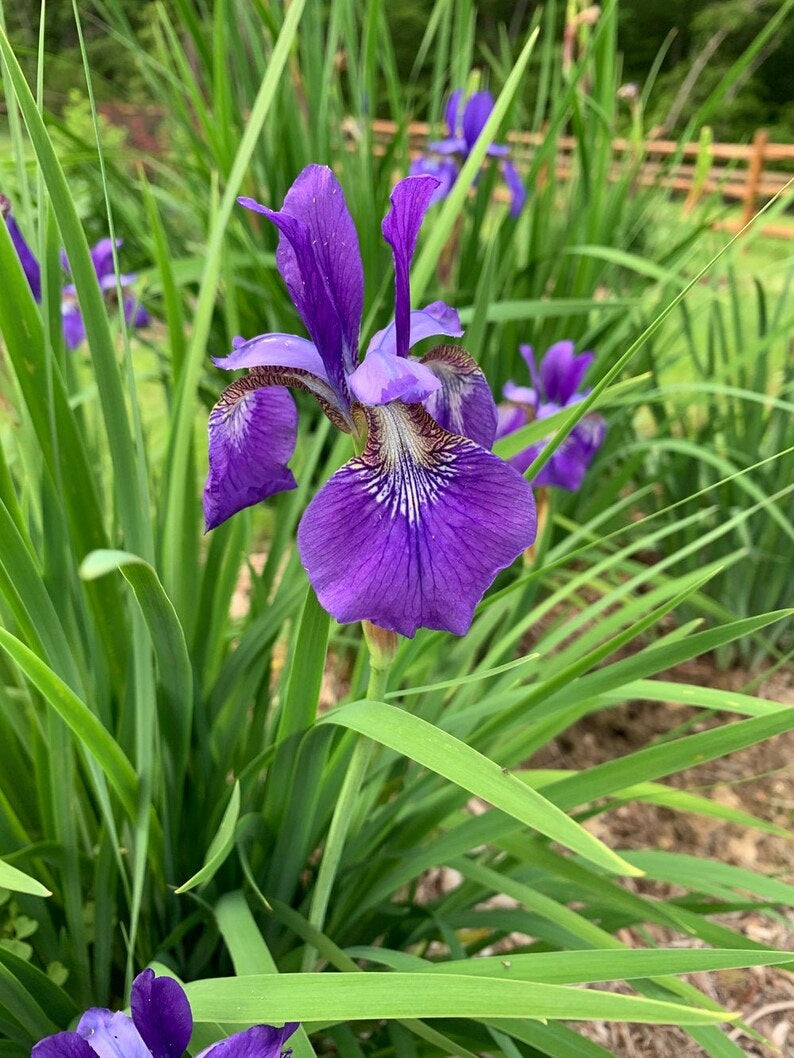The Beauty and Elegance of the Purple Iris Plant
When it comes to adding a touch of elegance and beauty to any garden, few flowers can compare to the stunning purple iris plant. Known for its vibrant hues and unique shape, the purple iris is a favorite among gardeners and flower enthusiasts alike. In this article, we will explore the history, symbolism, and care tips for this beautiful plant.
History and Symbolism
The iris has a long and rich history that dates back thousands of years. The flower is named after the Greek goddess Iris, who was known as the messenger of the gods and the personification of the rainbow. In Greek mythology, the iris was believed to serve as a bridge between heaven and earth.
Throughout history, the iris has been associated with a variety of meanings and symbolism. In ancient Egypt, the iris was considered a symbol of royalty and power, while in medieval times, the flower was often used as a symbol of faith and wisdom.
Today, the purple iris is commonly associated with royalty, wisdom, and courage. It is often used in bouquets and floral arrangements to symbolize admiration and respect. In some cultures, the purple iris is also believed to bring good luck and prosperity.
Care Tips

One of the reasons why the purple iris is so popular among gardeners is because it is relatively easy to care for. Here are some tips to help you grow and maintain a healthy purple iris plant:
1. Planting
The purple iris thrives in well-drained soil and full sunlight. It is best to plant the iris in the fall, so it has time to establish its roots before the winter months. Make sure to plant the rhizomes (the thick, root-like structures) just below the surface of the soil and space them about 12-24 inches apart.
2. Watering
During the growing season, the purple iris should be watered regularly to keep the soil moist but not waterlogged. It is important to water the plant at the base and avoid getting the leaves wet, as this can lead to fungal diseases.
3. Fertilizing
It is recommended to fertilize the purple iris plant in the spring just as new growth begins. Use a balanced fertilizer that is low in nitrogen to avoid stimulating excessive foliage growth at the expense of flowers. Follow the instructions on the fertilizer package for best results.
4. Pruning
After the iris has finished blooming, it is important to remove the spent flowers to encourage new growth. Cut the flower stalks down to the base of the plant and remove any dead or yellowing leaves. This will help prevent disease and keep the plant looking tidy.
5. Dividing
Every few years, the purple iris plant may become overcrowded and stop blooming as profusely. When this happens, it is time to divide the rhizomes to rejuvenate the plant. Dig up the rhizomes in the fall, divide them into smaller sections with a sharp knife, and replant them in fresh soil.
Conclusion
The purple iris plant is a true gem in the world of gardening. With its rich history, symbolic meanings, and stunning beauty, it is no wonder why this flower is so beloved by many. By following the care tips outlined in this article, you can enjoy the beauty of the purple iris in your own garden for years to come. So go ahead and add a touch of elegance and sophistication to your outdoor space with the purple iris plant!